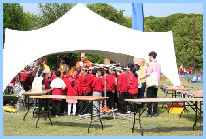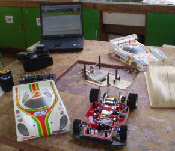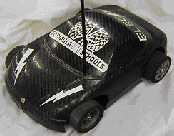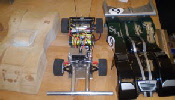© engineering your future -









An electrifying challenge from Formula Schools!
What is the Electric Challenge?
All the opportunities of the I.C class but far more
deliverable to large groups or in the curriculum. The
scale is reduced so that a
typical component can be more easily manufactured using school sized equipment, e.g.
vacuum formed body shells, CNC milled or routed chassis. Full curriculum delivery
materials including lesson plans and pupil research materials are available online.
Based on a 1/12th scale electric car it has all the features of engineering in the
following categories:
-
-
-
-
There are two classes of Dynamic challenge with the potential for different cars
1. Grand prix time trials:-
2. Time trial where accuracy and precision against the clock count:-
What will I get out of it?
The Formula Schools Electric Challenge provides hardware and a context with following
infrastructure to offer and deliver engineering as an extra-
All this adds up to young people experiencing the application of scientific / technical skills and knowledge not available in mainstream education.
Resources
The hardware required includes; radio gear with servos and transmitter; front and rear suspension units; power unit, control unit and motor; and drive assembly.
Teams or class groups design a competitive end product in the following areas:
Chassis, body shell, team ID and marketing.
Optional areas for development to produce a more competitive car include:
Power train, suspension and steering, crash resistance etc. In fact so long as the original motor and battery system remains any modifications are actively encouraged.
The rear axle and chassis dimensions determine the overall width of the car and can
be easily made using simple tools. Drawings of the standard assembly are supplied
including downloadable Pro-
Race Day
At Silverstone all the participants and companies supporting the scheme will take
part in both races. Judging of the cars and teamwork will take place along with the
all-
Prizes will be awarded for the following categories: Engineering; Body and Aerodynamics;
Teamwork, Grand Prix and Heats. Points accrue from all the rounds to give an overall
winner of the challenge.
Want to Know More?
If you'd like to know more about how to enter the Electric Challenge, e-

Electric Challenge Points Criteria
Electric Challenge Assembly Guide
Electric Challenge Steering & Suspension
Electric Challenge Speed Controller images
Gearing for optimum performance



Engineering Electric for curriculum delivery





